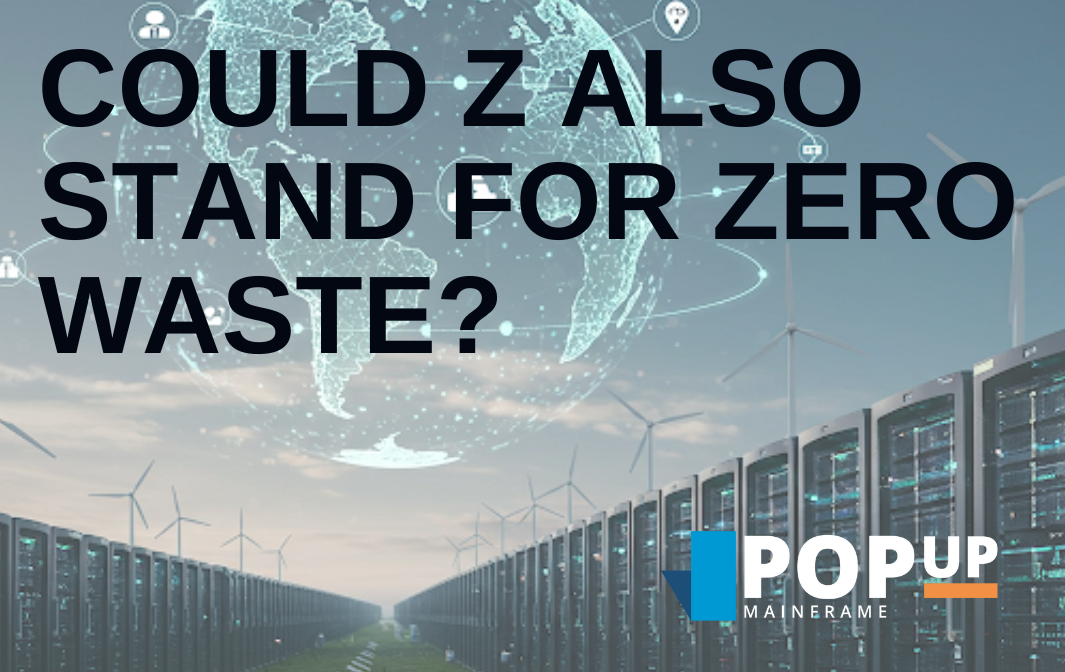The IBM Mainframe’s famed high availability is a huge selling point – but shouldn’t it also be flexing its sustainability muscles? Stuart Ashby examines.
Zero Downtime
According to those in the know, the z in z/OS stands for “zero downtime.” And you can see why – for production workload, the IBM mainframe does a fabulous job of running must-not-fail commercial and government systems for banks, insurance, airline, and card payment businesses. Unplanned downtime is basically unheard of for their mainframe systems.
I can remember one retail bank I worked at had a project to deliver 99.999% availability. This equates to 5m 13s of unplanned downtime per year. Five minutes a year! Now, consider other platforms you might use daily – what is the resiliency there?
Governing High Availability
When you are building systems to run on, you must not fail machinery; of course, the risk management considerations are significant.
When, in a previous role, I was part of a team introducing developer productivity changes into a six-way development parallel sysplex, the change review board would always question whether my change could impact the system availability. And—in reality—the questions were valid. While my testing was always thorough, the nature of my test environment (a much-reduced, limited sandpit, with only limited tooling and data), the fact was I couldn’t 100% guarantee the impact of the change.
A lesson learned here was that for mainframe workload, Innovation and availability can have diverging objectives.
Going Green
Recently, I had the opportunity to discuss these ideas during an interview with Planet Mainframe, where we explored the sustainability potential of mainframes. As part of the ESG (Environmental, Social, Governance) framework that measures the impact a company has on the environment and society, IT plays a critical role in meeting sustainability targets. ESG reporting frameworks, such as the SASB Standards, CDSB Framework, and GRI Standards, all contain references to how Information Technology can contribute to reducing carbon footprints.
Here the mainframe is a powerful resource, with retail banks publicly saying that the mainframe does >70% amount of workload for <10% power consumption and <10% footprint.
In my opinion, those numbers make the mainframe a green option for production workload. However, can the environmental impact of the mainframe be made even better for development and test environments?
At PopUp Mainframe, we have customers who are using Terraform scripts to provision a unit test environment on demand. The environment has the right resources for the developer to debug code changes, but—crucially–it only exists for as long as needed: power is only consumed when required.
In a typical development scenario for a single employee, usage of those resources within a 24-hour period would rarely exceed one-third active, and that’s if they are working on it all day. It is not hard to imagine the potentially vast savings in terms of emissions and CO2 usage across an entire development and test team.
This is a new mindset that reduces the focus on availability and increases the focus on ESG. As the importance of sustainability measurements enters the CIOs’ domain, more and more IT leaders are looking at innovative ways to deliver value while considering their sustainability goals.
Innovation is at hand
Together with some organizations I have worked with, I believe for mainframe development environments, we should be thinking that the z in z/OS is for zero waste.
And the good news is that technology already exists to drive that agenda forward. Technologically, there are plenty of options available (PopUp, Wazi, VM guests, and more) for all sizes of mainframe users.
At PopUp Mainframe, we are successfully implementing mainframe application delivery environments that can be set up and shut down on demand, offering a massive stride in the sustainability model for mainframe IT leaders.
We would love to have a conversation on how we can help demonstrate the value of our on-demand mainframe environments.

